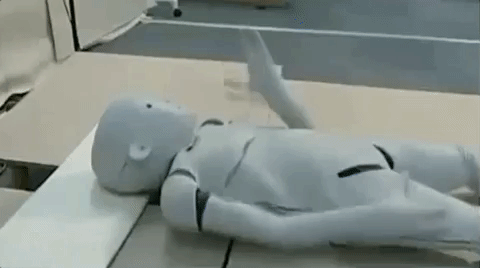Last week, I returned to Beijing from the Consumer Electronics Show (CES) in Las Vegas. This was my second year attending the show with my boss, Jim Fields, founder of Relay — a creative studio that creates videos and English copy for international Chinese tech brands like Huawei, Tencent, Xiaomi, Mobike, and more. Since CES has tons of internationally-minded Chinese tech brands, it’s a goldmine for meeting companies that we want to work with. So let’s move to the show floor…

I’m not sure if it’s because I was new to the whole tech world last year, or if there was a real change, but it seemed there was a real buzz about Chinese companies making an appearance at CES this year. About a week before the conference, there was an image making rounds on WeChat about the number of companies with a Chinese location in their names attending CES. There were a few variations on the same joke blowing up my WeChat: “Oh, CES stands for China Electronic Show,” or, “CES really stands for Consumer Electronics in Shenzhen.”
I believe this statistic comes down to culture. Chinese companies like to have a location in their name — sometimes this is a matter of personal taste, but often it’s because their officially registered name includes their location. I don’t think companies based in North America and Europe have a similar company naming system.
1,000 of the 4,000 total companies exhibiting at CES were from Mainland China
It is true that one quarter of all companies exhibiting at CES were from Mainland China: 1,000 out of the 4,000 total companies. But even those numbers seem a bit plumped up. There definitely were 1,000 companies from China, but many of them were design and equipment manufacturing (ODM/OEM) wholesalers. CES gets a lot of purchasers from around the world coming to visit, and these wholesalers do make deals here, but it’s not called the Wholesale Electronics Show. Alibaba wrapped up many of these Chinese ODM/OEM companies in their branded “design & source marketplace” tent, which was so big it seemed like you could walk a mile and still not get out of it.
China did still have a strong showing on the consumer side of things. The new concept car Byton, and Rokid, a company making moves in the AI voice assistant and AR glasses world.


Shanghai company Runmi was there with their actually-working auto-following suitcase. Richard Yu, head of Huawei’s Consumer Business Group, gave a talk that was deemed the best of all of CES speeches by The Verge.
Over the past decade, China has been intensely focused on growing its tech, and trying to become a global leader in innovation. This year, you could start to see where China is heading.
Related:
 Three Chinese Drones to KnowArticle Oct 11, 2017
Three Chinese Drones to KnowArticle Oct 11, 2017
In terms of general trends and the coolest things at this year’s CES: what I didn’t see were drones and VR headsets/VR systems. Last year there was a whole floor devoted to drones. This year there was none of that. It’s clear that DJI has won that war.
Same for VR headsets — these were also everywhere last year. I was honestly very happy to see that the hype around VR headsets and drones seems to be calming down.
What I saw more of this year were AI voice assistant products, AR (augmented reality) technology, and children’s educational robots.

I already go to a lot of these kinds of shows in China through my job at Relay, so nothing I saw seemed particularly crazy or futuristic to me, except for one company, appropriately enough named Futurus.
Futurus makes HUD (head up displays), small glass screens you put on your car dashboard which display a map showing you directions. These displays make it so that you don’t have to be looking at your phone, and are easier on your eyes.
Okay — it wasn’t the small glass display that was cool. Futurus’ staff took us to a VIP area in their exhibition booth where they had a fully simulated car interior. The entire car windshield in the simulation had holographic images popping up to show you the road you were driving on, and you could still clearly see the road through the glass. They didn’t let us take any pictures, because it’s still top secret, but it was pretty futuristic, and I hope to see my Didi driver with one of these soon!
In the end, CES still stands for Consumer Electronic Show, and not China anything, but it was still really amazing to see Chinese tech come into its own this year.
Cover image: Tech Radar















